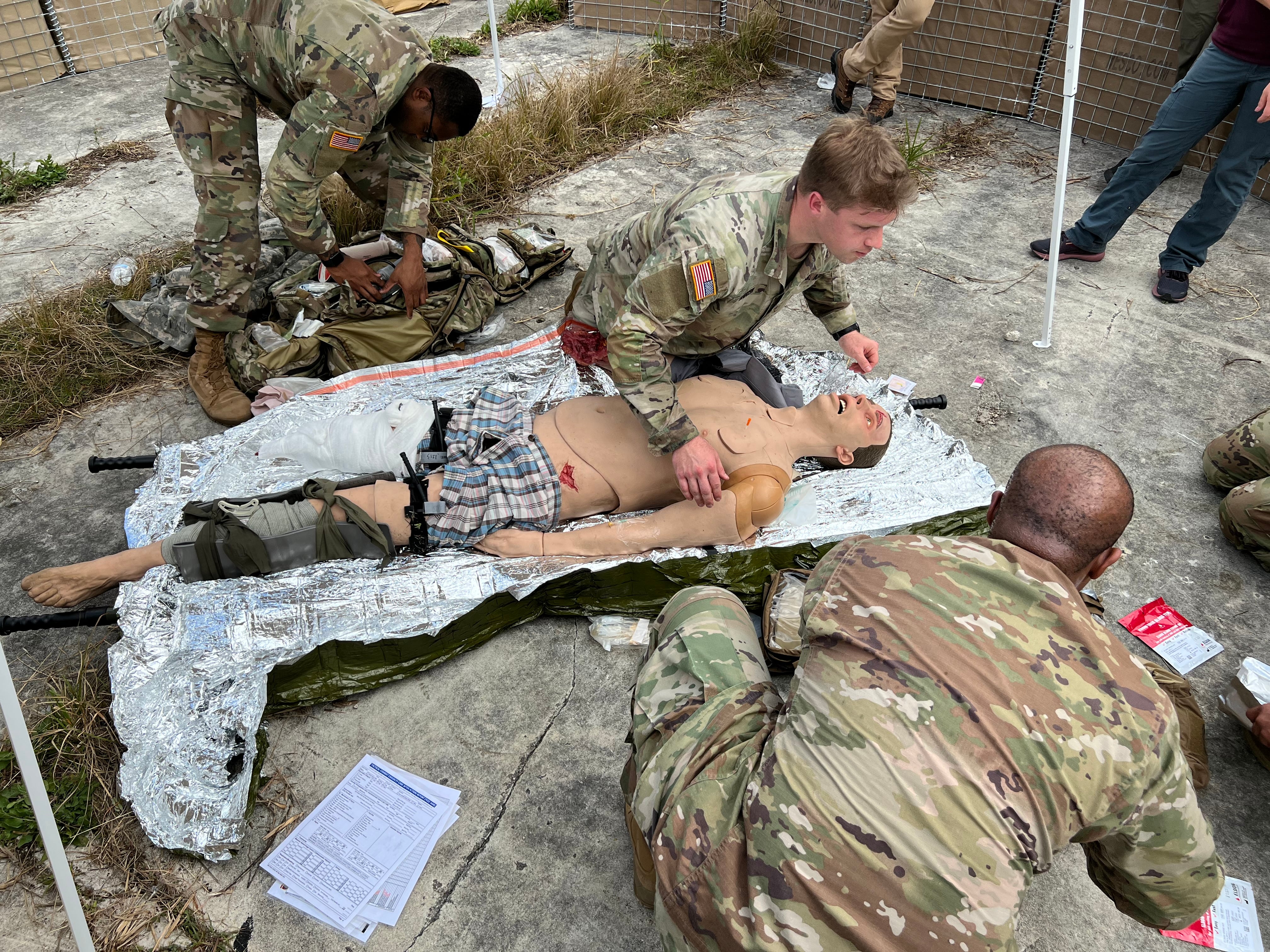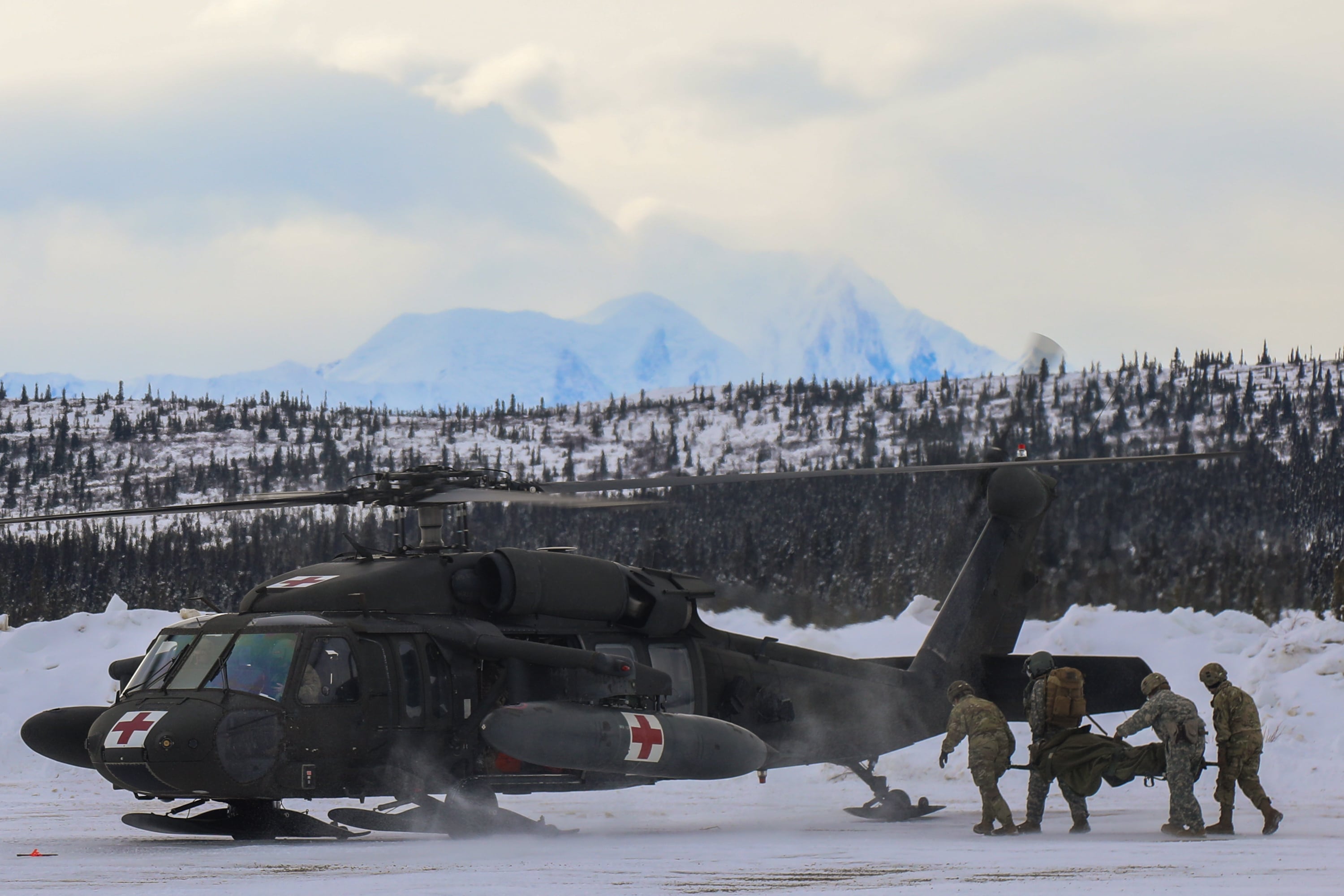Army Futures Command released its 2022 Medical Modernization Strategy earlier this month outlining futuristic plans for Army health care to be implemented by 2035.
Highlighted in the modernization strategy were plans to focus on developing next generation combat and aerial vehicles for medical evacuation and treatment; an updated network to better link the Army Health System with care providers within and outside of the Defense Department — including the Department of Veterans Affairs; and increased training for medical personnel, ranging from the average soldier to Army surgeons.
“Unmanned aerial systems and unmanned ground vehicles will autonomously transport casualties, execute medical resupply, and conduct applicable operational public health tasks,” the strategy suggested. “Medical resupply, medical evacuation, and casualty evacuation will leverage autonomous and semi-autonomous vehicle technology.”
Also suggested was the creation of new-and-improved first aid kits and acquiring new technological breakthroughs, such as dehydrated IV bags, medical-grade water and products like shelf-stable synthetic blood.
The need to study and address new chemical threats, radiological hazards and bio-engineered weapons was also highlighted in the document. There was also concern about the impact of climate change.
“Climate change will produce novel endemic diseases, release dormant microorganisms, increase regional competition for potable water, redistribute endemic diseases, and increase regional competition in a navigable Arctic region,” the strategy read. “Soldiers must be prepared to live and fight at environmental and temperature extremes.”

Under the new strategy, combat medics would see increased training to become “enhanced medics,” allowing them to train in prolonged field care at the EMT Advance Level. Training opportunities would include the implementation of virtual augmentation, telemedicine, artificial intelligence and robotics.
Soldiers outside of the combat medic specialty would also be taught skills equivalent to or greater than combat lifesaver-level training. Further, some Army jobs, which were not specified in the strategy, could be cross-trained as medics in addition to their primary specialty to allow enhanced medics to focus on more severe triage situations.
The Army also hopes to cut down on training time for medical personnel. According to the strategy, it currently takes 12-14 years to produce a qualified Army surgeon. Army Futures Command hopes that training simulations and artificial intelligence feedback will decrease time spent in the training pipeline by 50%.
“The Army Medical Modernization Strategy is important because it describes in detail how the Army will work alongside the Joint Force to provide outstanding health care to the Future Force,” Lt. Gen. James M. Richardson, acting commander of Army Futures Command, said in an Army press release.
“Soldiers are at the heart of our mission,” Richardson added. “Putting in the work now to ensure that Soldiers have access to cutting-edge health care equipment and resources for years to come is a core element of Army modernization.”
The modernization strategy was signed during a ceremony at Army Futures Command headquarters in Austin, Texas, on July 7. Lt. Gen. R. Scott Dingle, the Army surgeon general, and Col. James Jones, the director of the medical capability development at the Army Medical Center of Excellence, were both in attendance.
Rachel is a Marine Corps veteran and a master's candidate at New York University's Business & Economic Reporting program.




